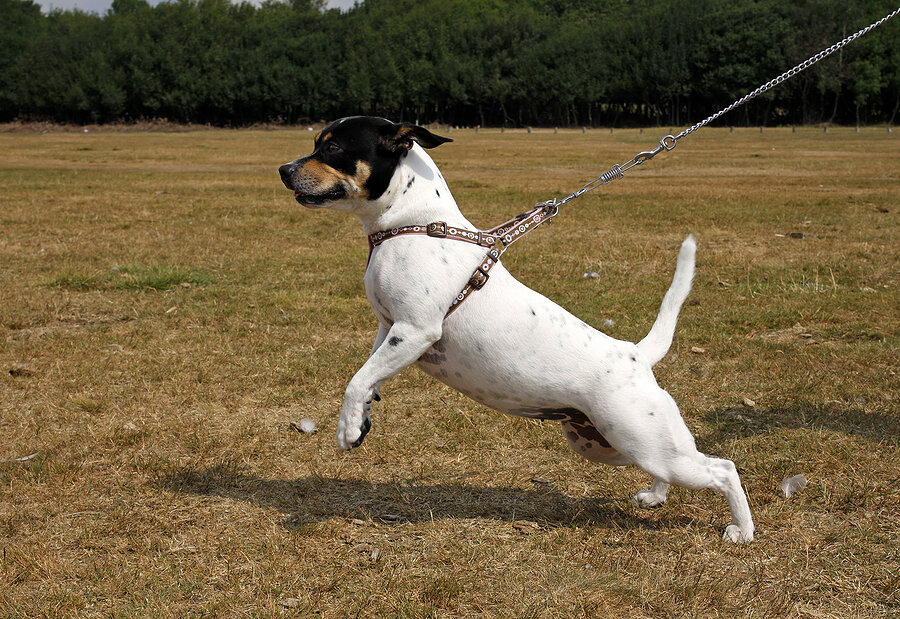Why crate train your dog
The number one thing crate training will do is provide supervision.
Many dog owners want to leave their dog out free in the house or apartment only to come home to the garbage can tipped over, pieces of the couch bitten off, and wet spots on the floor.
What happens next?
You get so upset with your dog that you start screaming at them. You tell them how “You knew better” and “I am so annoyed with you right now”.
This is typical and could of been avoided if you crate train your dog.
Nobody wants to come home to the trash on the floor. Also you put things in the trash that are not meant to be eaten.
Maybe you put some hazardous material in the trash.
Maybe you put glue or old food in the wrong can.
Whatever you put in the trash your dog was not supposed to eat it.
Your dog can get sick, which means a trip to the vet, which means more money you spend.
What about that half eaten couch?
It was expensive and now you have to buy another one.
In the meantime it looks tacky as your guest see it when they come over.
Who wants to sit on a couch with chunks of it missing anyways?
Now the wet spots or the mountain of poop on your floor is entirely a different beast on its own.
It can ruin your floor!
You can step in it and ruin your shoes or at a minimum have to clean them and wash out the smell.
You get my point.
These things are all avoided by crate training your dog.
You will come home with the assurance knowing that your couch or wall is not eaten. Also knowing that your dog is safe because they haven’t swallowed something they were not supposed to.
Things you will need:
How to crate train( for dogs who are not anxious or had a bad experience)
See if your dog will go in there on their own. Don’t force your dog. Throw a treat in the crate and see what they do. If they don’t walk in, they are telling you
“I am not ready to go in, even for a treat”
Leave the crate door open and allow them to explore. Once they take a step forward, praise them and give them a reward if they will take it.
Don’t rush. Let them explore slowly. Once they are consistently doing this with no problem start to close the door slowly and open it quickly and reward your dog.
Start leaving your dog in the crate for 5 seconds, then 10 seconds, then 2 seconds.
(It is very important that you don’t increase time in a linear way. ie: 1 sec, 2 sec, 3 sec, 5 sec, 10 sec, 20 sec. Doing this is not beneficial for the dog. When you mix up the time, the dog doesn’t know what to expect and doesn’t become anxious since he cant predict the time that he will stay in the crate)
Leave your dog in the crate especially when you are home.
Many people will only leave their dog in the crate when they are leaving. In the dog’s mind they are thinking
“Every time I go in the crate you leave and I am all alone”
I know it might not seem to make sense to put your dog in the crate when you are home since you can supervise your dog, but you need to do this.
It doesn’t have to be long. Maybe 15 minutes. That it!
Put your dog in the crate overnight.
Your dog should not be sleeping with you. They should sleep in their own bed. This is healthy separation. Where as sleeping with your dog or having them follow you around can cause separation anxiety.
Now for the difficult cases.
You can repeat the previous steps, but if your dog will not get in the crate in can be difficult to put them in it.
What you have to remember is you must get your dog in the crate or the next time will be harder. If you struggle to get your dog in the crate and you fail to get your dog in the crate they will put up a strong fight the next time.
In the dog’s mind they won the exchange and you lost.
You MUST win!
Once you win, your dog will settle down and realize the crate is not that bad.
This is so important!!!
Many dog owners don’t realize that they can’t put their dog in the crate because they kept trying and lost every time.
Tip:If you tell your dog to go in the crate, then make sure you can get them to go in the crate
The next step is to make sure your dog is calm in the crate. You want your dog to relax.
The mistake that I see is at this point you shouldn’t give your dog a treat.
A treat is given when you are introducing a puppy or a dog without anxiety to a crate.
A dog with anxiety will need you to stop them from getting so aroused. They need you to help their mind relax and food will not do that.
If you are having difficulty with this then….




